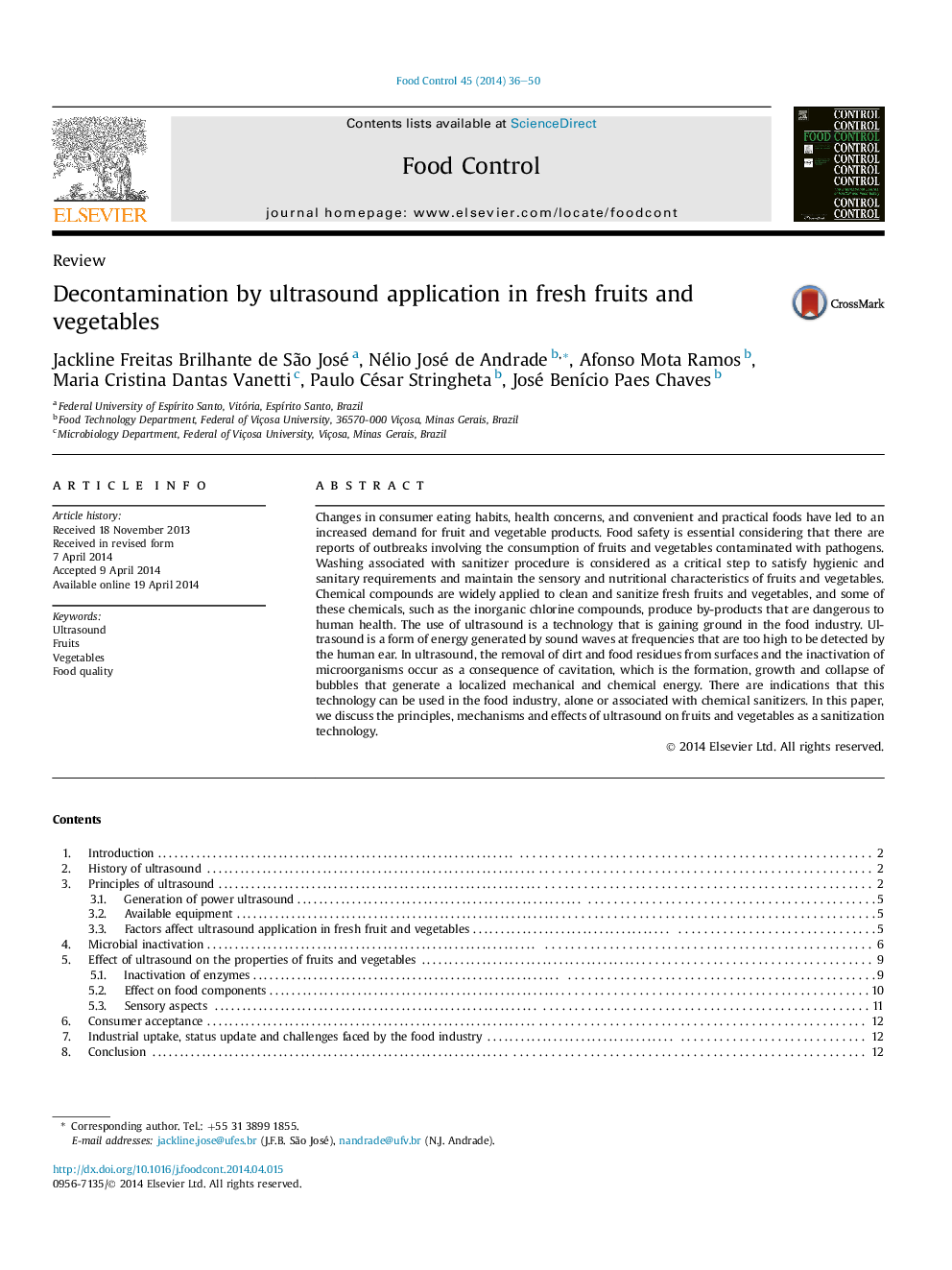| Article ID | Journal | Published Year | Pages | File Type |
|---|---|---|---|---|
| 6391595 | Food Control | 2014 | 15 Pages |
Abstract
Changes in consumer eating habits, health concerns, and convenient and practical foods have led to an increased demand for fruit and vegetable products. Food safety is essential considering that there are reports of outbreaks involving the consumption of fruits and vegetables contaminated with pathogens. Washing associated with sanitizer procedure is considered as a critical step to satisfy hygienic and sanitary requirements and maintain the sensory and nutritional characteristics of fruits and vegetables. Chemical compounds are widely applied to clean and sanitize fresh fruits and vegetables, and some of these chemicals, such as the inorganic chlorine compounds, produce by-products that are dangerous to human health. The use of ultrasound is a technology that is gaining ground in the food industry. Ultrasound is a form of energy generated by sound waves at frequencies that are too high to be detected by the human ear. In ultrasound, the removal of dirt and food residues from surfaces and the inactivation of microorganisms occur as a consequence of cavitation, which is the formation, growth and collapse of bubbles that generate a localized mechanical and chemical energy. There are indications that this technology can be used in the food industry, alone or associated with chemical sanitizers. In this paper, we discuss the principles, mechanisms and effects of ultrasound on fruits and vegetables as a sanitization technology.
Related Topics
Life Sciences
Agricultural and Biological Sciences
Food Science
Authors
Jackline Freitas Brilhante de São José, Nélio José de Andrade, Afonso Mota Ramos, Maria Cristina Dantas Vanetti, Paulo César Stringheta, José BenÃcio Paes Chaves,
